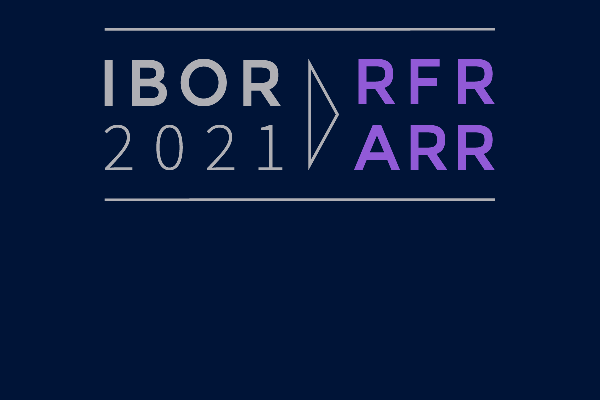IBOR reform: facts, dates, implications, and how ION can help
Interbank Offered Rates (IBOR) were published daily for multiple currencies since 1986. They became one of the pillars underpinning the financial markets. In 2008, however, it turned out the rates were manipulated by the participating banks which was confirmed in subsequent investigations. The Financial Conduct Authority (FCA) has recommended adopting Alternative Reference Rates (ARRs). In line with the proposed dates, on 5th of March 2021, the FCA announced that EUR, GBP, CHF, and JPY, and two USD tenors will permanently cease on 31 December 2021. Overnight and 12-month tenors of USD IBOR will cease on 30 June 2023.
What’s different between IBOR and ARRs?
The ARRs – ESTR, SONIA, SARON, TONA, and SOFR for EUR, GBP, CHF, JPY, and USD, respectively – are available today. They are published by Bloomberg as so-called “fallback” rates together with spread adjustment to the original IBOR rates. The rates are applicable to the derivative contracts governed by International Swaps and Derivatives Association (ISDA) master agreements. The existing floating rate derivative contracts shall transition to these new rates as of the IBOR cessation date. Floating rate note contracts may be subject to consent solicitation – an agreement between the counterparties regarding the transition.
Entities with floating rate IBOR-based contracts in their portfolios have less than a year to get ready for the date when IBOR rates will no longer be published. This is impacting IBOR-based floating-rate derivative transactions such as IR swaps, and floating rate issued debt or investment transactions where the floating rate interest is based on IBOR. This is also affecting fair-value calculation traditionally based on IBOR quotes in short-term tenors, and hedge accounting.
There are some significant differences between IBOR and ARRs. IBOR was a forward-looking index, with rates available for fixing in-advance. The new ARRs are, on the contrary, overnight indexes; fixing occurs in-arrears and will utilize various methods of averaging over a range of prior dates. Further, valuation and discount curves that are used in risk management, fair-value accounting, or hedge accounting will have to be adjusted to the new indexes as well.
Due to these structural changes, it is advisable that entities prepare for the upcoming change.
How to transition from IBOR to ARRs?
Since many companies typically manage their transactions in a Treasury Management System (TMS), it is necessary for the TMS to have all the relevant features ready and deployed. This is a prerequisite for the entity to seamlessly adopt the change in the areas of transaction management, yield curve construction, and accounting.
Technically, the floating rate transactions will have to be amended to allow for in-arrears fixing. The fixing rate will be determined by an averaging mechanism and can be linked to the fallback indexes and spreads published by market data providers such as Bloomberg. This is mandatory for the transition of the existing derivative contracts governed by ISDA master agreements. This can also be (technically) adopted as a transition mechanism for the issued or invested into floating rate notes (FRN). However, since there is no ISDA-like mechanism for these instruments, it is necessary to negotiate transition and transaction amendment bilaterally with the counterparty, so called “consent solicitation.”
Similarly, the accruals have to be calculated in sync with the new interest fixing methodology. Further, the definition of valuation and discount curves – how they are constructed off the new indexes – will have to be amended. And the Treasury Management System (TMS) has to determine the P/L difference due to the transition and allow to generate and post the corresponding journal entries.
In hedge accounting, it shall be possible to continue with active hedge relations. The international standards allow for relief in effectiveness calculation related to the transition and recognize in P/L any impact of the transition. Nevertheless, it is also possible to fully de-designate and re-designate the hedges.
How can ION help?
At ION, we have been closely monitoring the market developments. We have been following the market discourse, analyzing impacts on our TMS solutions, and enhancing our software. Today, our portfolio of TMS software is equipped with features allowing for compatibility and compliance with the new methodologies and regulations. All ION TMS are ready to support the transition from IBOR rates to the new ARRs.
ION not only delivers the tools to support the transition, but also provides an on-demand IBOR Transition Assessment Service (ITAS) to help customers determine the extent and scope of the transition. ION experts help customers to determine the necessary steps and system features to transition their company’s portfolio.
With the dates of cessation of IBOR indexes clear and firm, the last stage of the IBOR reform has started. New ARRs are specified, relevant market data is published, treatment of fixing the floating interest, yield curve construction and related accounting entries generation are defined. For all companies that have not kicked of their IBOR transition projects, it’s time to get started. They have to review to which extent their portfolio is affected by the IBOR reform, and determine which new software features to deploy to achieve a smooth transition. Adopting those changes and transitioning to the new market standards does not have to be a painful experience. Innovative technology providers such as ION offer tools and services to help you with your IBOR project.

IBOR Resource Center
If you want to learn more about IBOR and how ION can help you with your transition project, check out our IBOR resource center.

